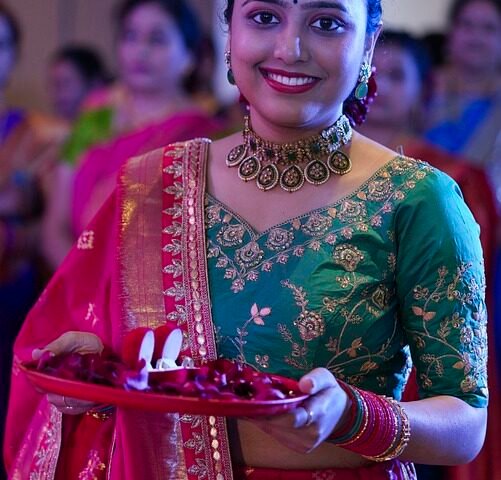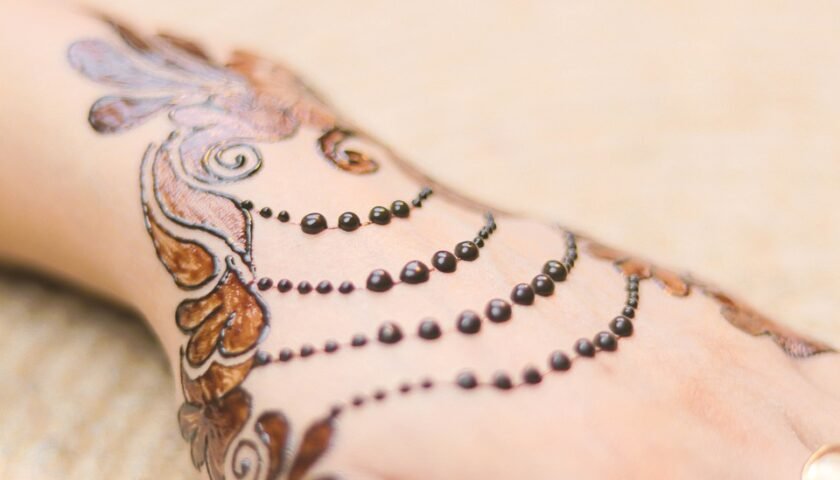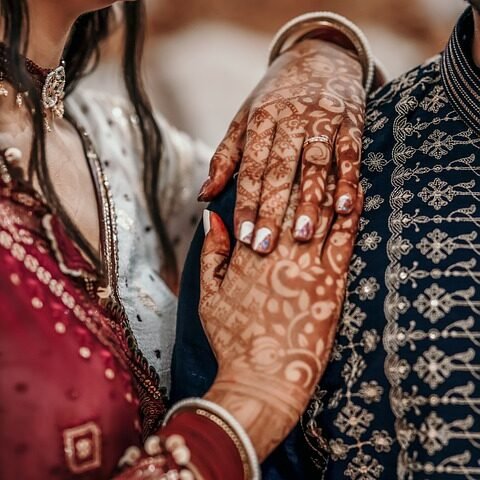[ad_1]
Capturing the Essence of Tradition: Indian Wedding Attire Throughout History
Indian weddings are known for their grandeur, vibrant colors, and intricate rituals. One of the aspects that truly captures the essence of this rich culture is the traditional wedding attire. Indian wedding attire has not only evolved with time but also reflects the diverse history and traditions of this vast country. Let us take a journey through time and discover the evolution of Indian wedding attire throughout history.
Ancient India saw the emergence of the traditional saree, a garment that continues to be a symbol of elegance and grace even today. The saree, typically made of silk, is a long piece of cloth that is draped around the body, showcasing the woman’s beauty. In ancient times, it was common for women to wear sarees with simple designs and embellishments. The colors used were muted and subtle, reflecting the simplicity of the era.
As India went through various dynasties and invasions, the fashion and embroidery techniques of the Indian wedding attire underwent significant changes. The Mughal era, characterized by opulence and grandeur, introduced luxurious fabrics like brocade and velvet. The Mughals also brought intricate embellishments such as zari work (gold or silver thread embroidery) and zardozi (metallic wirework).
The arrival of the British in India and their subsequent rule influenced Indian fashion significantly. Western influences began to blend with traditional Indian attire, giving birth to the “Indo-Western” fusion. This fusion was particularly evident in wedding attire, where gowns and dresses with Indian embroidery and motifs became popular. Embellished tops paired with skirts or pants showcased a unique mix of cultures.
The post-independence era witnessed a return to traditional Indian wedding attire as a symbol of cultural resurgence. Indian designers began to reimagine traditional styles, incorporating modern elements while staying true to the roots. The lehenga-choli, a popular choice for Indian brides today, is an excellent example of this fusion. The lehenga, a voluminous skirt, is paired with a choli, a midriff-baring blouse, and a dupatta (stole). This ensemble combines traditional patterns, embroidery, and cuts with modern fabrics, making it a perfect blend of tradition and contemporary fashion.
In recent years, there has been a growing trend of eco-friendly and sustainable fashion in the wedding industry. Many brides are opting for handloom fabrics like khadi and organic cotton, contributing to the revival of traditional textile arts. The focus has shifted to preserving and promoting the indigenous crafts of India, showcasing the rich heritage and artistry that goes into creating wedding attire.
Indian wedding attire has come a long way, reflecting the cultural, social, and historical changes that have shaped the nation. It exemplifies the beauty of tradition, the artistry of craftsmanship, and the vibrant spirit of India. Whether it be the timeless saree, the regal lehenga-choli, or the contemporary fusion ensembles, Indian wedding attire continues to capture the hearts and minds of people worldwide.
As we celebrate the traditions and customs of Indian weddings, let us also appreciate the artistry and craftsmanship behind the intricate designs and vibrant colors that make Indian wedding attire truly extraordinary. It is a testament to the diverse and vibrant heritage that lives on through generations, encapsulating the essence of tradition.
[ad_2]




